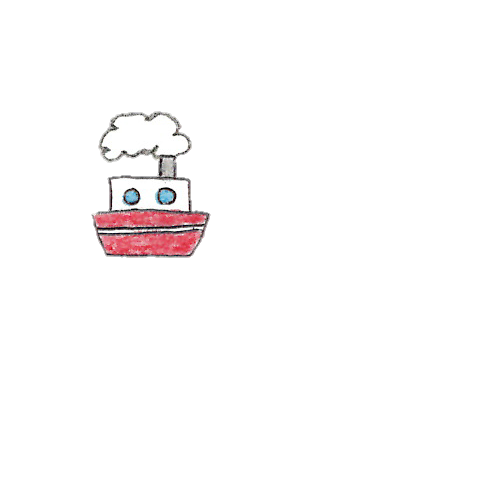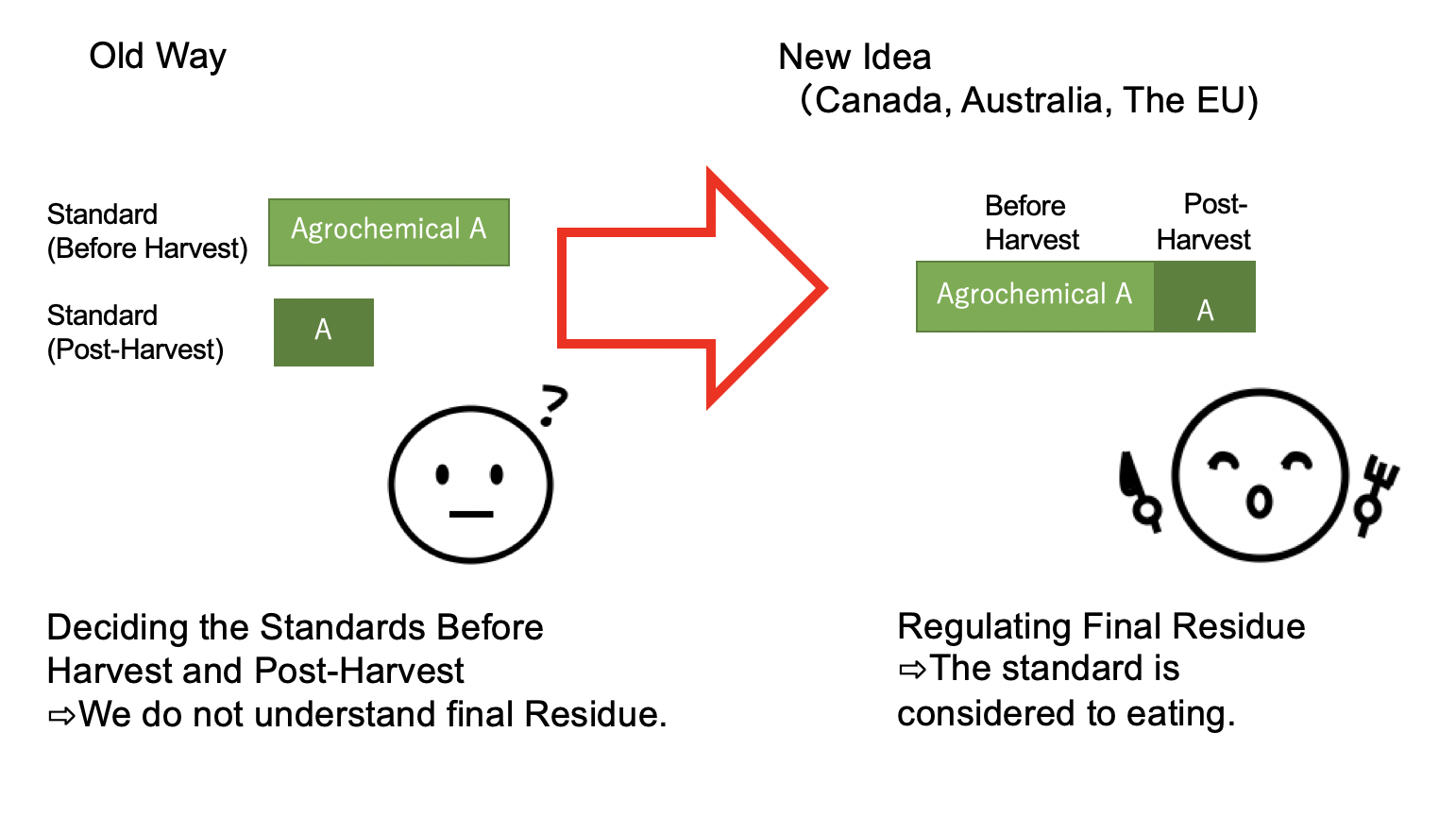Over The Sea : Regulations of Imports in Japan
Regulations of Imports in Japan
Next, we explain the import system in Japan.
It is impossible to know all agrochemicals used in foreign countries.
In Japan, the positive list system has been adopted in 2006.
This system regulates residual agrochemicals of imported products.
Agrochemicals are categorized into three types, and each regulation has been decided.
・ Agrochemicals which are regulated in Japan
→The same standards are adopted for imported food.
・Agrochemicals which are not regulated in Japan
→If a certain amount (0.01 mg of agrochemicals per 1 kg of food) remains in food, selling the food is prohibited.
According to “Really think about “food safety”” (Uneyama, 2009, pp.17-18), a certain amount means “The amount that most substances does not threaten human health.”
・ Agrochemicals which do not threaten human health obviously
→Excluded from the positive list system.
These agrochemicals are decided by the Ministry of Health, Labour and Welfare (Japan).
About the Way How to Decide The Standard from harming the human body and the environment.

*With standard for agrochemical registration… Standards for preventing agrochemicals
Reference Labour and Welfare (Japan).
About a new system (positive list system) for residual agrochemicals [pdf].
Retrieved from
https://www.mhlw.go.jp/topics
As you can see, imported food is regulated by a positive list system.
About Post-Harvest
One of the distinctive agrochemicals used in foreign countries is post-harvest.
There is a time lag before crops imported to Japan after harvesting crops in foreign countries. If the crops are left untouched, mold will grow and they will be eaten by pests.
Post-harvest is used to protect crops from these harms. It can be used as soon as crops are harvested, or it can be used to expel pest after crops are imported.
But is it safe for human to use agrochemicals after harvest?
First, we explain the standards of post-harvest in foreign countries. We mention two cases: one of them is the United States, the others are Canada, Australia and the EU.
In the United States, residue standards are distinguished agrochemicals used before harvest from post-harvest. It is so as not to make residue standard high immoderately.
In Canada, Australia, and the EU, they make a standard based on the residue when we eat. Not distinguishing agrochemicals used before harvest from post-harvest, but they regulate the amount of agrochemical which remains finally.

Reference Japan Crop Protection Association.
Tell Me! Agrochemicals Q&A[website].
Retrieved from
https://www.jcpa.or.jp
Next, we move on to the explanation about the regulation of post-harvest in Japan.
In Japan, post-harvest is considered food additive, not residual agrochemicals.
It is because Japan has different consciousness of post-harvest from other countries.
Countries which consider post-harvest as agrochemicals, they think that all of chemical substances, which are used for crops, are agrochemicals.
On the other hand, Japan distinguishes between chemical substances in terms of time of use. Chemical substances which are used before harvest are agrochemicals. Chemical substances which are used after harvest are food additive.
However, food additives are still coverage for the positive list system just like agrochemicals. if chemical substances greater than the standard are detected, it will not be sold. Moreover, if unregistered food additives are detected, it cannot be sold.


